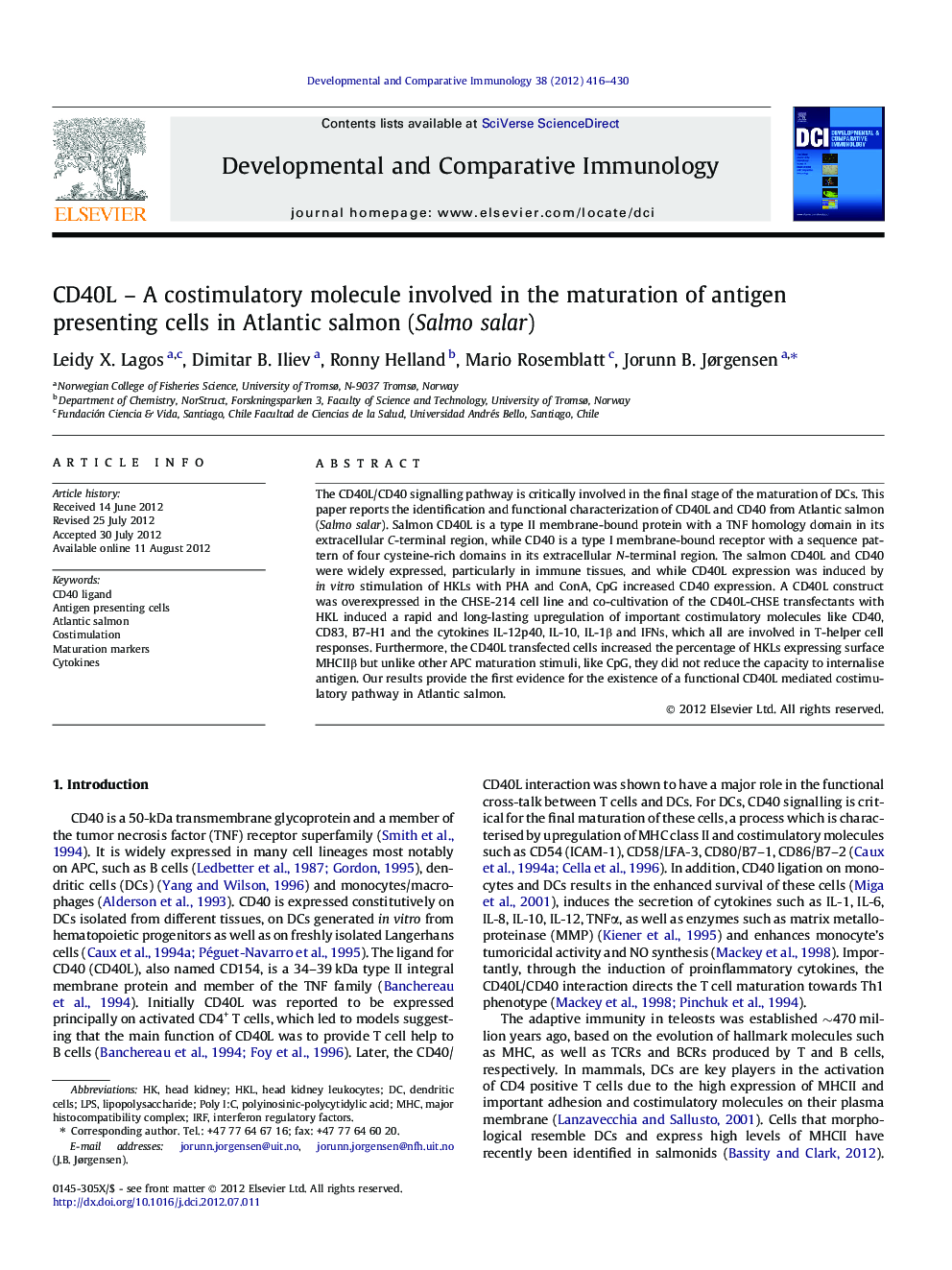| کد مقاله | کد نشریه | سال انتشار | مقاله انگلیسی | نسخه تمام متن |
|---|---|---|---|---|
| 2429460 | 1106497 | 2012 | 15 صفحه PDF | دانلود رایگان |

The CD40L/CD40 signalling pathway is critically involved in the final stage of the maturation of DCs. This paper reports the identification and functional characterization of CD40L and CD40 from Atlantic salmon (Salmo salar). Salmon CD40L is a type II membrane-bound protein with a TNF homology domain in its extracellular C-terminal region, while CD40 is a type I membrane-bound receptor with a sequence pattern of four cysteine-rich domains in its extracellular N-terminal region. The salmon CD40L and CD40 were widely expressed, particularly in immune tissues, and while CD40L expression was induced by in vitro stimulation of HKLs with PHA and ConA, CpG increased CD40 expression. A CD40L construct was overexpressed in the CHSE-214 cell line and co-cultivation of the CD40L-CHSE transfectants with HKL induced a rapid and long-lasting upregulation of important costimulatory molecules like CD40, CD83, B7-H1 and the cytokines IL-12p40, IL-10, IL-1β and IFNs, which all are involved in T-helper cell responses. Furthermore, the CD40L transfected cells increased the percentage of HKLs expressing surface MHCIIβ but unlike other APC maturation stimuli, like CpG, they did not reduce the capacity to internalise antigen. Our results provide the first evidence for the existence of a functional CD40L mediated costimulatory pathway in Atlantic salmon.
Figure optionsDownload high-quality image (198 K)Download as PowerPoint slideHighlights
► For the first time functional characteristics of Atlantic salmon CD40L and CD40 is provided.
► Salmon CD40L and CD40 sequences share characteristics with other TNF and TNF superfamily molecules.
► Salmon HKLs responded to ectopically expressed CD40L by upregulating costimulatory molecules and cytokines.
► CD40L-stimulation increased the percentage of MHCIIβ-“high” HKLs.
Journal: Developmental & Comparative Immunology - Volume 38, Issue 3, November 2012, Pages 416–430